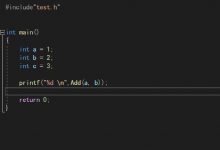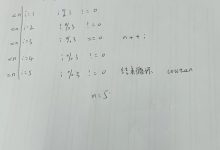C语言中的字符串函数有如下这些
- 获取字符串长度strlen
- strcpy
- strncpy
- strstr
- strerror
接下来看看如何实现它们
获取字符串长度
strlen
我们看看文档是怎样说的,如下
strlen文档
size_t strlen ( const char * str );
Get string length
获取字符串长度
Returns the length of the C string str.
返回C字符串str的长度
The length of a C string is determined by the terminating null-character: A C string is as long as the number of characters between the beginning of the string and the terminating null character (without including the terminating null character itself).
C字符串长度是由\’\\0\’来确定的,也就是说从字符串的第一个开始只要遇到\’\\0\’就结束长度计算(不包含\’\\0\’)
This should not be confused with the size of the array that holds the string. For example:
不用困惑你创建的数组的大小,比如这样
char mystr[100]=\"test string\";
defines an array of characters with a size of 100
char
s, but the C string with which mystr has been initialized has a length of only 11 characters. Therefore, while
sizeof(mystr)
evaluates to
100
,
strlen(mystr)
returns
11
.
定义一个大小为100的数组
mystr
,然后
mystr
就已经被初始化为一个长度为11的字符串了。所以呢,
sizeof(mystr)
会得出
100
, 而
strlen(mystr)
会返回
11
.
综上,可以知道
- 字符串已经 \’\\0\’ 作为结束标志,strlen函数返回的是在字符串中 \’\\0\’ 前面出现的字符个数(不包含 \’\\0\’ )。
- 该函数只认\’\\0\’,参数指向的字符串必须要以 \’\\0\’ 结束。
- 注意函数的返回值为size_t,是无符号的
实现
strlen函数的实现有好几种。
比如
- 计数器的方法
- 递归
- 指针 – 指针
接下来一一实现。
1. 计数器:使用一个变量来记录 – count
断言指针不为空是个好习惯~
int my_strlen(char* str){int count = 0;assert(str != NULL);while (*str != \'\\0\') // while (*str){count++;str++;}return count;}
就一直找\’\\0\’,当*str不是\’\\0\’时,就count++,str++,直到遇到\’\\0\’停止,然后返回count就是长度了。
2. 递归
断言指针不为空是个好习惯~
int my_strlen(char* str){assert(str != NULL);char* p = str;while(*p == \'\\0\'){return 0;}return 1 + my_strlen(p + 1);}
比如传入的str地址为 1000
那么 1 + my_strlen(p + 1) 中,p + 1,指针偏移后就是1001,以此类推。
1 + 1 + my_strlen(p + 1)
1 + 1 + 1 + my_strlen(p + 1)
1 + 1 + 1 + 1 + my_strlen(p + 1)
…
1 + 1 + 1 + 1 + … + 0
最终就可以得出长度。
3. 指针-指针
断言指针不为空是个好习惯~
int my_strlen(char* str){assert(str != NULL);char* p = str;while (*p != \'\\0\'){p++;}return p - str;ad8}
把指针str的地址赋值给一个新的指针p,str作为指向起始地址的指针,不改变它,记录起始地址。
然后通过指针p进行查找\’\\0\’,判断当前字符是否为\’\\0\’,不是就进行p++,然后继续判断下一个字符,如此循环,直到指针p找到\’\\0\’,然后用 当前的指针p 减去 起始指针str 进行返回,就是长度了。
 爱站程序员基地
爱站程序员基地


